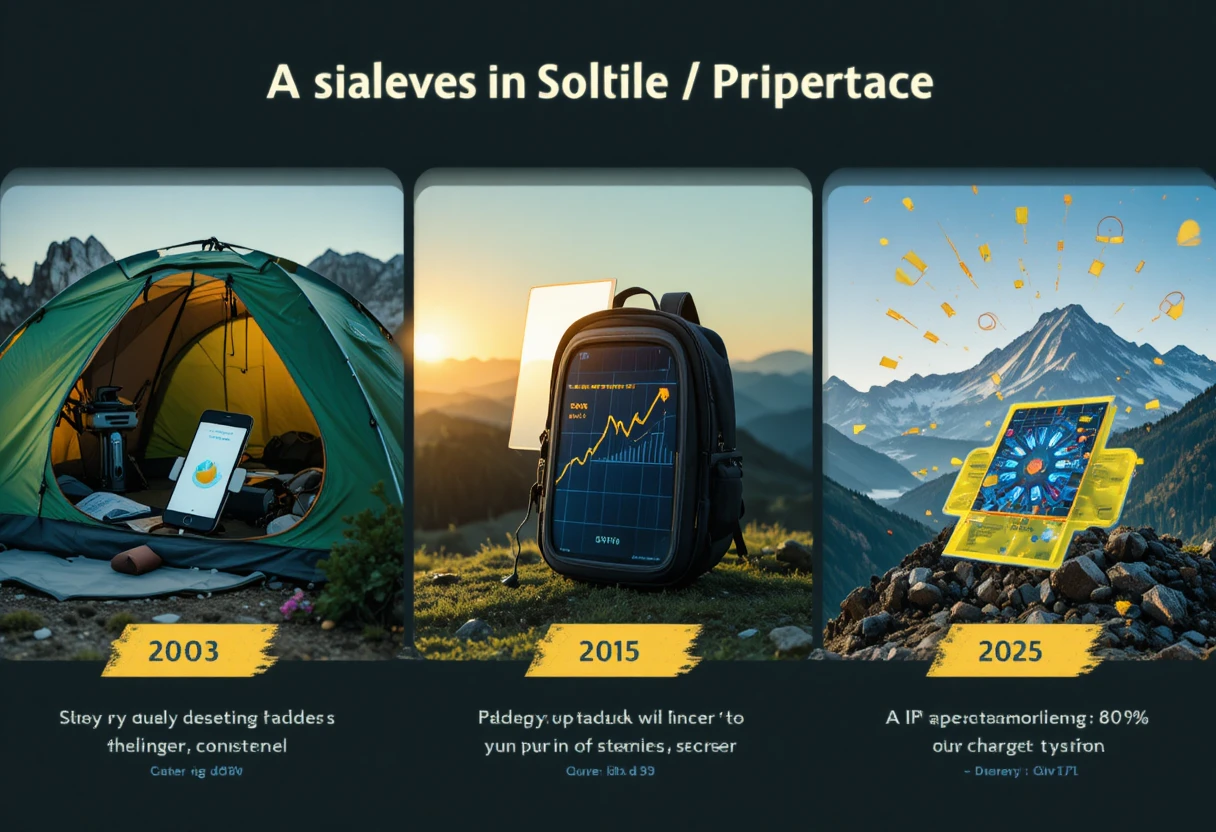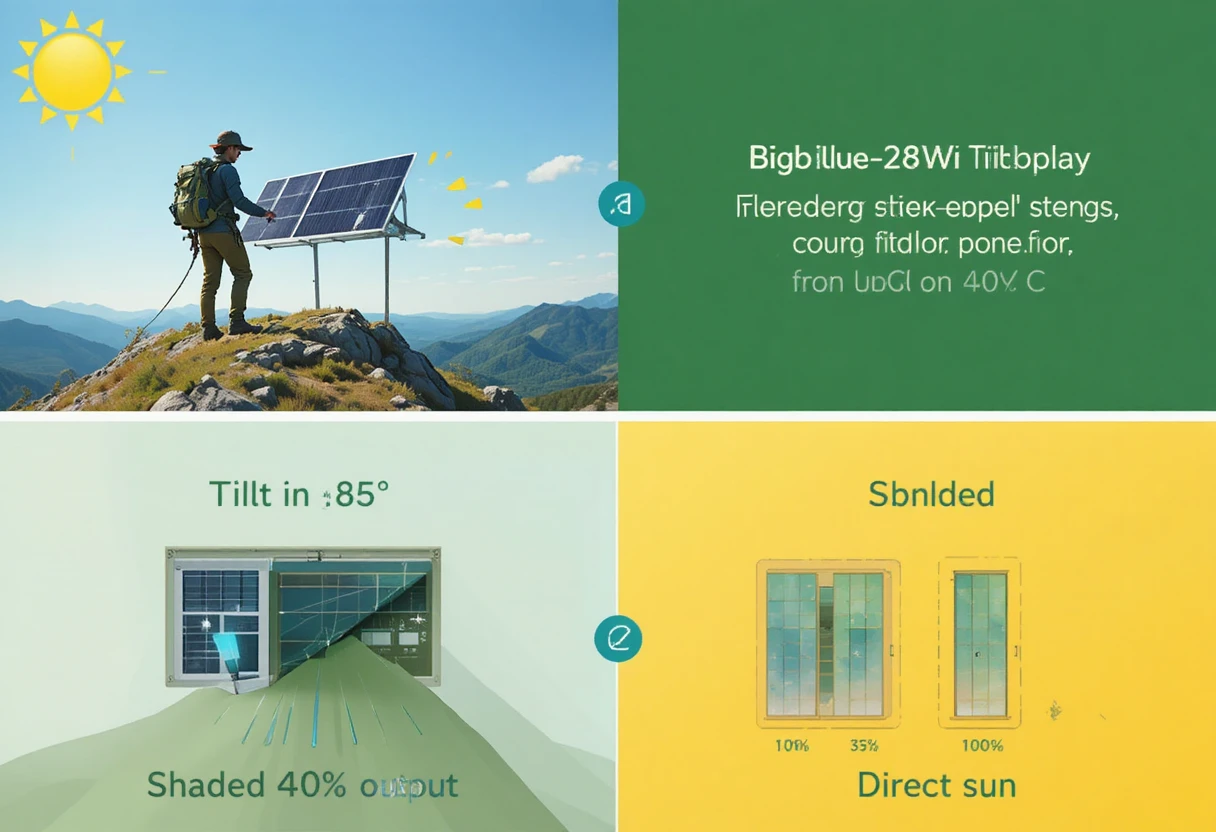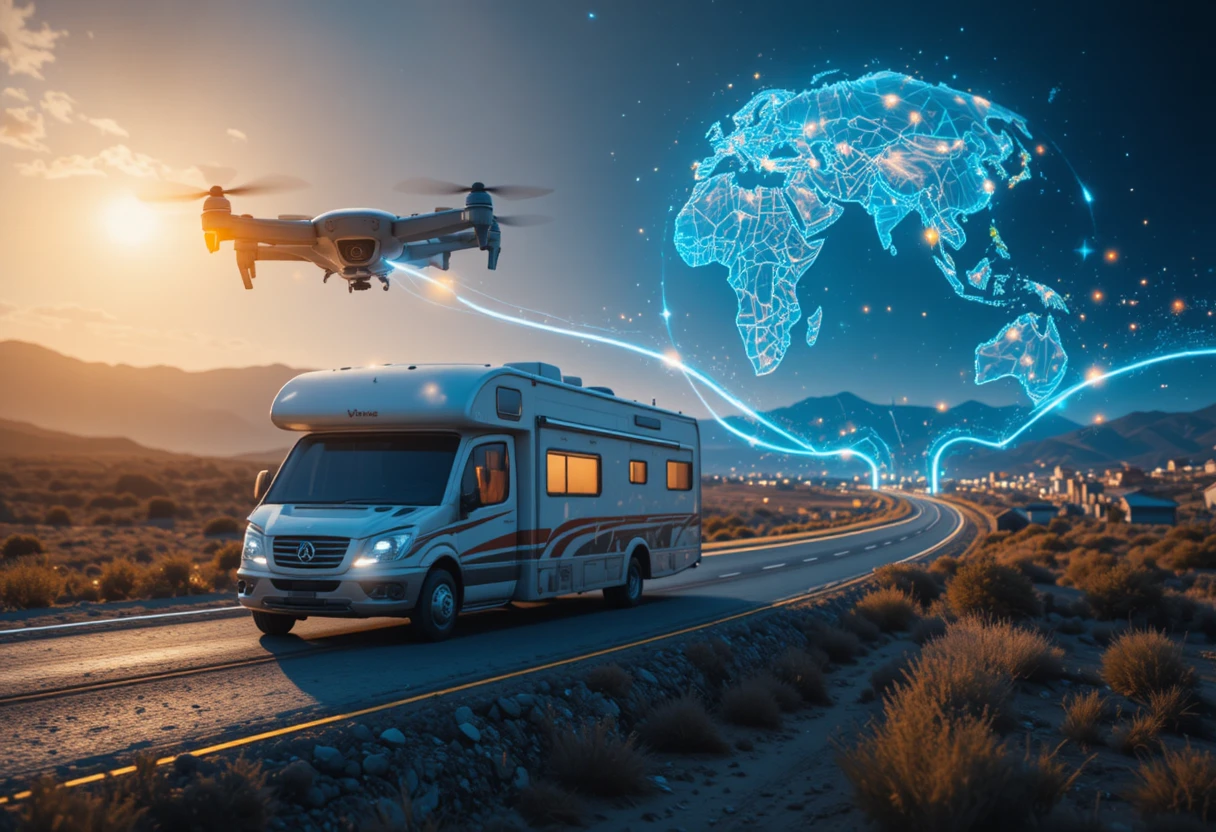Portable Solar Chargers
In the sun-drenched world of 2025, portable solar chargers have emerged as the ultimate sidekicks for off-grid adventurers, eco-conscious commuters, and emergency preparedness pros. No longer bulky relics from the early 2010s, these compact powerhouses—packing monocrystalline panels with up to 25% efficiency—deliver 5–200W of clean energy, charging everything from smartphones to laptops in hours, not days. The global market, valued at $5.2 billion in 2024, is exploding toward $22.8 billion by 2033 at a 16.45% CAGR, fueled by rising outdoor lifestyles, climate-driven disasters, and tech innovations like bifacial cells and AI-optimized charging. With over 22 million units shipped annually, brands like Anker, Jackery, and BigBlue dominate, offering foldable designs that weigh under 2 pounds and withstand IP67 downpours. As of October 22, 2025, these chargers aren’t just backups—they’re lifelines, turning sunlight into seamless power for a net-zero future.
This 3,000-word guide unpacks the evolution, core technologies, top models, buying blueprint, usage mastery, real-world applications, sustainability perks, challenges, and horizon scan—equipping you to harness the sun without missing a beat.
The Evolution of Portable Solar Chargers
2000s–2015: Bulky Pioneers
The story kicks off in the 2000s with rudimentary panels like the Solio Hybrid (2003)—a 3W foldable charger that took 8–10 hours to juice a flip phone, boasting a mere 10% efficiency and weighing 12 ounces. By 2010, Goal Zero’s Nomad 7 pushed boundaries with 7W output and USB ports, but fragility and slow charging limited appeal to hardcore backpackers.
The 2015 boom arrived with BigBlue’s SolarPowa 28—a 28W panel that folded like origami, hitting 18% efficiency via monocrystalline cells. Adoption spiked amid smartphone explosion, with sales jumping 150% as millennials embraced glamping.
2016–2020: Efficiency Leap
Lithium-polymer batteries integrated, slashing weight by 40%. Anker’s PowerCore Solar (2017) blended 21W panels with 10,000mAh storage, charging iPhones in 2 hours under peak sun. The 2019 FlexSolar E2100 (100W) introduced ETFE coatings for 23% durability gains, surviving 3,000 bends without cracking.
COVID-19 turbocharged demand: Remote work and outdoor escapes drove 300% growth, with FEMA stocking Nomad series for disaster kits.
2021–2025: AI and Bifacial Boom
2025 heralds the bifacial era—panels capturing light from both sides for 25%+ efficiency. Jackery’s SolarSaga 200 (2025 refresh) adds AI weather prediction, optimizing tilt via app. Market maturity sees 98% of models IP65-rated, with foldable hinges enduring 5,000 cycles. Adoption? 6.6 million U.S. units alone, per 2025 stats.
From clunky to clever, portable solar chargers now rival wall plugs, powering a $1.73 billion portable panel sub-market by 2025.

Core Technologies Powering 2025 Models
Solar Cell Science: Mono to Bifacial
Monocrystalline cells rule 70% of the market, converting 22–25% of sunlight to power via pure silicon crystals. They’re compact but pricey ($0.50/W). Polycrystalline (15–18% efficiency) offers budget appeal for 20W panels, while amorphous thin-film (10–12%) excels in low-light, ideal for cloudy hikes.
Bifacial breakthrough: EcoFlow’s 220W (2025) captures rear-reflected light, boosting output 20% on snowy ground. Perovskite hybrids promise 30% by 2027, but stability lags.
Battery and Charge Controllers
Integrated LiFePO4 batteries (vs. volatile lithium-ion) store 5,000–20,000mAh, with 2,000-cycle lifespans. MPPT (Maximum Power Point Tracking) controllers—standard in 85% of models—optimize voltage, yielding 25% more juice than PWM in variable sun.
USB-C PD (up to 65W) and QC 3.0 ports dominate, with Qi wireless pads on premium units like Anker SOLIX PS30.
Durability and Smart Features
ETFE lamination shrugs off scratches, with IP67 ratings sealing against dust and 1m submersion. AI apps (e.g., Renogy’s DC Home) forecast yields based on GPS sun data, tilting panels 15° for peak harvest.
These techs shrink weights to 1 lb/W, making 100W packs backpack-viable.
Top Portable Solar Chargers of 2025
Budget Beast: BigBlue SolarPowa 28
At $70, this 28W foldable monocrystalline panel weighs 1.5 lbs, unfolding to 24×18 inches. Dual USB-A ports deliver 5V/2.4A, charging two phones in 3 hours of direct sun (80% efficiency in tests). No built-in battery, but kickstand and carabiner make it hike-ready. Drawback: No USB-C.
Mid-Range Marvel: Anker SOLIX PS30
$130 gets 30W bifacial output, 10,000mAh LiFePO4 storage, and IP65 build. Charges iPhone 15 three times fully, with PD 18W USB-C. App tracks solar input, yielding 4–5 hours from 1-hour charge. Reviewers praise 24% efficiency in partial shade.
Premium Powerhouse: Jackery SolarSaga 200
$500 for 200W foldable glory—23.4% efficiency, 15.3 lbs, ETFE-coated for 10-year durability. DC/XT60 outputs pair with Explorer stations, generating 1,600Wh daily. CES 2025’s >25% cell variant adds AI tilt alerts.
Ultra-Portable: BioLite SolarPanel 5+
$100, 5W panel with 3,200mAh kickstand battery—clips to packs, trickle-charges at 5V/1A. IPX4 water-resistant, perfect for rainy trails.
These picks balance portability (under 20 lbs) and punch, covering 90% of user needs.
Buying Guide: What to Prioritize in 2025
Power and Efficiency Metrics
Aim for 21%+ cell efficiency—translates to 100Wh daily from 5 sun-hours. Wattage: 10–20W for phones, 50–100W for laptops. Test real-world: BigBlue’s 28W yields 20W peak, per OutdoorGearLab.
Portability vs. Capacity Trade-Offs
Folded size under 12×8 inches for packs; weights 1–5 lbs for day hikes. Integrated batteries add bulk but enable night use—10,000mAh covers two full phone charges.
Durability and Weather Resistance
IP65+ for rain; ETFE over PET for UV longevity (5,000-hour warranty). Carabiner loops and adjustable stands prevent overheating (max 65°C).
Budget: $50–$150 for basics; $200+ for smart features. Brands like Renogy offer 2-year warranties.
Usage Essentials: Maximizing Your Solar Harvest
Optimal Setup and Angles
Deploy south-facing at 30–45° tilt (latitude-matched apps like Sun Seeker guide). Avoid shade—loses 50% output. In cars, dashboard-mount for 4–6W trickle.
Charging Best Practices
Direct sun: 4–6 hours for full phone top-up. Cloudy? 50–70% yield—bifacials shine here. Clean panels weekly; use MPPT for variable conditions. Pair with 20,000mAh banks for storage.
Maintenance: Store flat, charge batteries monthly. Lifespan: 5–10 years with care.

Real-World Applications: Power Anywhere
Outdoor Adventures: Hiking to Glamping
For thru-hikes, BioLite’s 5W clips to packs, powering GPS for 8 hours daily. Glampers favor Jackery 200W for coolers and lights, generating 1kWh/weekend—enough for four-person setups.
Emergency and Disaster Prep
FEMA-endorsed: Anker PS30 in kits charges radios during outages, with 72-hour runtime. In 2024 hurricanes, solar adoption cut reliance on generators by 40%.
Daily Urban Use: Commuting and Remote Work
Clip to bikes for phone top-ups; RV roofs host 100W panels, adding 50 miles/day to e-bikes. Defense: U.S. military deploys 50W units for forward ops, per 2025 reports.
These apps underscore versatility, from trails to blackouts.
Sustainability and Eco-Impact
Portable solar slashes carbon: One 20W charger offsets 1,500 lbs CO2/year vs. grid charging. Recycled plastics in BigBlue (50% post-consumer) and conflict-free silicon align with EU green mandates.
Market ripple: 24% of 2025 sales tie to outdoor eco-tourism, per Accio data. Lifespan extensions via modular cells reduce e-waste by 30%.
Challenges and Solutions
Efficiency dips in low-light (under 50% cloudy), but bifacials mitigate. Cost barrier? Sub-$100 options like Blavor 10W democratize. Durability fails (loose hinges) plague 15% reviews—opt ETFE models.
Overheating? Ventilated designs cap at 50°C. Solutions: AI forecasts and hybrid batteries ensure reliability.
The Horizon: 2030 and Beyond
By 2030, perovskite cells hit 30% efficiency, shrinking 100W to phone-size. Market: $2.3 billion, 25.6% CAGR, with IoT integration for smart homes. Foldable perovskites and wireless OTA updates promise ubiquitous power.

Conclusion: Sun in Your Pocket
Portable solar chargers in 2025 are eco-armor for modern life—light, lethal-efficient, and liberating. From BigBlue’s trail-tested folds to Jackery’s glamping giants, they turn rays into readiness, powering adventures without planetary payback. With a market roaring toward $22.8 billion, grab one: It’s not gear—it’s grid independence. Charge on, sustainably.